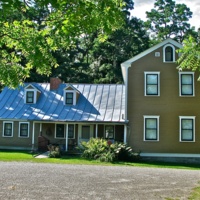
Rokeby Museum
The Rokeby Museum presents a 'nationally significant Underground Railroad story tucked inside a quintessential Vermont experience.' The museum was established in 1961, and covers 100 acres, with ten historic buildings. Originally a prosperous merino wool farm, Rokeby was owned by the Robinson family during the nineteenth and twentieth centuries. The family were abolitionists, and provided a safe haven for fugitive slaves from the American South.
The Underground Railroad Education Centre which marks the entrance to the museum houses the sites permanent museum exhibitions. 'Free & Safe: The Underground Railroad in Vermont' tells the stories of Jesse and Simon; two fugitive slaves who found shelter at Rokeby during the 1830s. Using a range of historic documents and artefacts the exhibition traces their journey from slavery to freedom. It also introduces the Robinson family and their support of the American abolition movement. The use of audio and film, recreating some of the voices of the exhibition's main characters, brings the history to life for visitors.
The rest of the museum is made up of historic buildings, including the main farmhouse, that have been restored and refurnished in order to provide visitors with a glimpse as to what life would have been like on the farm when Jesse and Simon were there. It is thought that both would have spent a significant length of time working on the farm before moving on towards Canada.
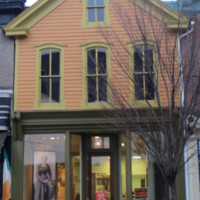
Harriet Tubman Museum
The Harriet Tubman Museum is a small museum located in Cambridge, Maryland, a few miles from where Harriet Tubman was born. The museum originated as a community organization which was planning a single three-day event honouring Harriet Tubman in 1983. Over the years, the Harriet Tubman Organisation has adjusted its goals; today its mission 'is to develop programs and services for children and families and to preserve the history and memory of Harriet Tubman by offering the general public an interpretive history of her achievements.'
The museum's permanent exhibition is a combination of interpretive text and artefacts, many recovered from nearby plantations. The artefacts on display represent the objects that the enslaved would have used in their daily lives, as well as more brutal symbols of slavery like shackles. The museum, which accepts admission donations, is usually open Tuesday - Saturday. Through the museum, visitors can also organise trips to the actual property where Tubman was born and worked. The museum hosts school groups as well as a range of special events throughout the year.
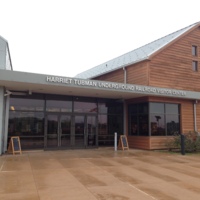
Harriet Tubman Underground Railroad National Historical Park
The Harriet Tubman Underground Railroad National Historical Park was established in 2003, the 100th anniversary of Tubman's death, in rural Dorchester County. In 2017 the Harriet Tubman Underground Railroad Visitor Centre was officially opened. The visitor centre was a collaborative project between the US National Park Service and the Maryland Park Service. The building houses exhibition space, a research library and gift shop. Also on location is a public pavilion and legacy garden.
The design of the site was built around the importance of northward movement in the slave's quest for freedom. The legacy garden stretches out north between the buildings, offering an expansive and hopeful view. The view south is more enclosed and fragmented, reflecting the intolerable existence for those enslaved. The visitor centre houses an exhibition that chronicles the life and accomplishments of Tubman; her birth into slavery, escaping and subsequently returning to free friends and family, her work as a Union spy and her activism after the Civil War. The story is told through a combination of interpretive text, videos, murals, dioramas and her own powerful words.
The park and visitor centre are open seven days a week and are free to the public. The visitor centre also provides further information on the Harriet Tubman Underground Railroad Byway Driving Tour, which has 36 stops throughout the Eastern Shore of Maryland linked to Tubman's life.
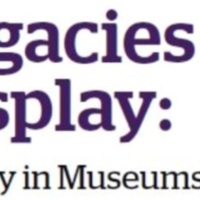
The National Great Blacks in Wax Museum
The National Great Blacks in Wax Museum opened in 1983. It was set up by Drs. Elmer and Joanne Martin as a cultural and educational institution that focusses solely on the study and preservation of African American history. It is a unique organisation as it represents the histories it interprets through the use of life size wax figures, presented in historical settings. The museum has several objectives, including to increase interest in African American history, to use inspiring examples from history to motivate young people to achieve, and to improve race relations by dispelling myths of racial inequalities. The museum attracts around 300,000 visitors annually.
The museum features thirty-five installations of 'great blacks' in a range of scenarios. These cover a large temporal and geographic span, beginning with representations of key figures in pre-slavery Africa, through to dioramas of the space race and modern science. The key focus is on black achievement through all sectors of society, including politics, the military, sport and business.
Many of these installations link to the history of slavery in the United States. They examine the Middle Passage and captivity, plantation life and resistance with graphic displays of the instruments of brutality utilised in the system of enslavement. Others depict key characters in African American journeys to freedom including Henry 'Box' Brown and W.E.B. Dubois. The abolition movement is incorporated into the installations with the characters of Frederick Douglass and Sojourner Truth. The Underground Railroad is also depicted in a display with Harriet Tubman, amongst others. Many of these dioramas also incorporate models of children.
The displays continue to chart the twentieth century, examining the Civil Rights Movement, Black Power, and the Jim Crow Laws. Some of these dioramas illustrate the abhorrent nature of the racial violence that dominated the United States, such as lynching, in graphic detail.
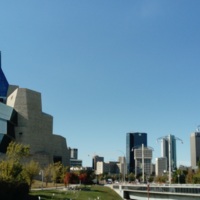
Canadian Museum for Human Rights
Situated in Winnipeg, at the heart of the Canadian Prairies, the Canadian Museum for Human Rights is the first museum in the world solely dedicated to the past, present and future of human rights. The museum aims to create inspiring interactive experiences for its visitors in order to equip them with the tools needed to make a difference in the lives of others. It is the first museum in nearly five decades to be built outside Canada's National Capital Region, with funding from the Canadian government, after being established by legislative amendments to the Museums Act in 2008. The museum's building was purpose-built, designed to reflect the themes of the museum in the external construction, with a Hall of Hope built in luminous alabaster and outside glass wings surrounding the building represent a dove as a symbol of peace.
The Canadian Museum for Human Rights has ten core galleries as well as two spaces for temporary or travelling exhibitions. All of the displays within the museum feature diverse aspects of human rights. These include: a discursive introductory display about what human rights are, a gallery that explores the perspectives of indigenous Canadian people, and an exhibition that focusses on the stories of Canadian individuals or groups that have had their own 'journeys' with human rights challenges. Another exhibition features an overview of Canada's legal stance on human rights. Other galleries explore human rights from a more global perspective, looking at the Holocaust, other instances of genocide around the world and 'Turning Points' that have marked key changes in international human rights policy. The later galleries on the visitor route explore human rights in the present and their potential in the future, challenging visitors to take action and inspire change. All of these galleries feature the use of digital interactives, film and audio presented from lots of different perspectives, often providing the visitor an opportunity to actively participate with the theme of the exhibition. Built without a collection, the museum has filled its galleries with objects on loan from organisations around the world, both in Canada and abroad. They also have objects donated to them from the people and groups the galleries represent. The museum also has a Tower of Hope that visitors can go up, with views over the city, and an indoor garden of reflection.
The Transatlantic Slave Trade is cited as the first instance of genocide in world history in the 'Breaking the Silence' gallery which explores the role of secrecy and denial in the persecution of genocide and what happened when people spoke out or offered resistance. The centre-piece of the gallery is an interactive table that shows instances of genocide, both through time and across the world, alongside related documents and images. The 'Canadian Journeys' gallery incorporates the narrative of enslaved Africans using the Underground Railroad to escape to freedom in Canada. There are also narratives of more contemporary forms of slavery and human trafficking. Narratives of enslavement have also featured in public programmes at the museum.
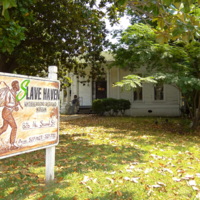
Slave Haven Underground Railroad Museum
The Slave Haven Underground Railroad Museum opened in 1997 on the Burkle Estate- an historic house in Memphis. Originally built by a German immigrant, Joseph Burkle, the building is thought to have been part of the Underground Railroad, offering safe harbour to the enslaved on their escape route through the USA to Canada. Made up of period, nineteenth-century room settings, the museum documents the history of the Underground Railroad and the possible role of the house in that network. It also features displays about the system of transatlantic slavery, slave auctions and the everyday life of slaves in the wider Memphis area using collections of artefacts and archival material, including many advertisements from slave auctions.
The site's main feature is its secret cellar and trap doors that are thought to have offered refuge to runaway slaves. Visitors are invited to step down into the cramped cellar and kneel on the brick floor to get a deeper understanding of the plight of the enslaved. The museum also conducts guided tours around the site and the local area, highlighting the broader history of slavery in the USA.
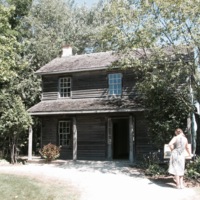
Uncle Tom’s Cabin Historic Site
Built on the site of the Black settlement that Rev. Josiah Henson helped found in 1841, Uncle Tom’s Cabin Historic Site preserves the settlement where Henson and his wife Nancy lived. The site is situated within 200 acres and was named after Harriet Beecher Stowe’s popular 1852 antislavery novel which featured an enslaved African man named Tom (based on Josiah Henson) as its protagonist. The area of land was purchased in 1841 to establish the Dawn Settlement - a refuge for the many fugitives from slavery who escaped to Canada from the USA. Today thousands of visitors travel to the site every year to learn and understand more about this history. The site includes a number of buildings which originally composed the British-American Institute, an all-ages teacher training and general education manual school. Present day visitors will find examples of a sawmill, smokehouse, and pioneer church, as well as the Henson family cemetery. The house where Josiah Henson and his wife Nancy lived has also been restored to 1850s period fashion. Also located on the site is the Josiah Henson Interpretive Centre which houses a collection of 19th century artefacts relating to the abolitionist era and to Henson himself. Highlights include a rare early edition of Henson’s autobiography and a signed portrait of Queen Victoria presented to him in 1877. Upon arrival at the Interpretive Centre, visitors are guided into the North Star Theatre where they are shown a film titled Father Henson: His Spirit Lives On. A further gallery named Underground Railroad Freedom Gallery displays a narrative of the history of African freedom seekers from initial capture in Africa and enslavement in the United States to freedom in Canada. The site also runs a variety of educational programmes aimed at children and young adults, alongside a popular programme of guided tours.
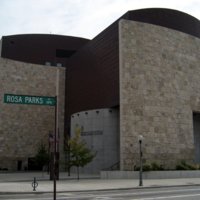
National Underground Railroad Freedom Centre
The National Underground Railroad Freedom Centre opened in August 2004 and has since strived to tell the stories of those who have fought for freedom from the Underground Railway to the present day in the hope of challenging people’s ideas about inclusivity and freedom. The museum also aims to encourage and inspire people to promote and work towards freedom. Its position next to the Ohio River is a poignant reminder of its purpose as this river separated the southern slave states from the free states of the North. The National Underground Freedom Centre examines America’s heritage alongside discussions of contemporary slavery and human trafficking. It also forms part of a group of 'Museums of Conscience' alongside three others across the United States, including the United States Holocaust Memorial Museum. The National Underground Railroad Freedom Centre reveals stories about freedom’s heroes: the men, women and children who challenge inequities to pursue greater freedom for their brothers and sisters. Through a series of rolling ‘special exhibitions’ and its vast collections displayed in several permanent exhibition spaces, the museum highlights the long history of enslavement in America, and its continuing legacy in the modern world.
The centre's most significant artifact is an original slave pen (or prison) originally built in 1830, and thought to be the only surviving example in the world. Visitors can walk through the pen and see some of the names of the people who were once held there. Alongside the pen, which is housed in its own exhibition space on the museum's second floor, there is a permanent exhibition, 'From Slavery to Freedom.' This exhibition covers three hundred years of slavery from its introduction to the Americas to its abolition. 'From Slavery to Freedom' is funded by the Oprah Winfrey Foundation and features a range of collections, including artefacts, archaeological specimens and paintings.
The centre also houses the 'world's first museum-quality, permanent exhibition on the subjects of modern-day slavery and human trafficking'; 'Invisible: Slavery Today' uses the experiences of five individuals who have been caught up in different forms of contemporary slavery and exploitation to highlight the issue in the modern world, as well as including examples of modern antislavery work around the world.
The centre also contains examples of interactive exhibits, with films, hands-on activities and live gallery talks, aimed at providing their visitors with a multi-sensory experience.
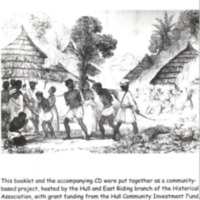
Songs of Slavery
The Songs of Slavery CD and booklet were produced by a community-based project, led by the Hull and East Riding branch of the Historical Association. The project was part of the Wilberforce 2007 initiative in Hull. Songs of Slavery recorded 19 songs relating to slavery, alongside six short narratives. Most of the songs date from the mid-19th century and were originally composed and sung by enslaved peoples. Some were based on religious beliefs, others also contained coded messages to aid escape and resistance. The Songs of Slavery tracks were sung or narrated by local choirs, singers and musicians, together with students from local schools and colleges.
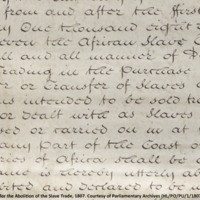
West Wales and the Slave Trade
The Friends of Narberth Museum presented an exhibition which examined the people, places and events in West Wales with links to the transatlantic slave trade and the campaign for abolition. Children from local schools worked with copies of documents and diaries relevant to the Narberth area, and designed their own commemorative plates. Events included a talk on the Underground Railroad and quilting, a children’s writing workshop, and a Deep South supper with music.
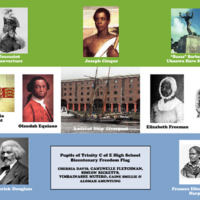
Bicentenary Freedom Flag
The Bicentenary Freedom Flag was displayed alongside an exhibition about Wartime Black History at Manchester Town Hall. The project was a collaboration between staff from Manchester City Council Corporate Services Black Staff Group and pupils of Trinity Church of England School in Manchester. The flag recognised the work, struggles and sacrifices of those who brought the slave trade to an end, and featured images of prominent individuals on the background of the Sierra Leone flag. Those featured on the flag included Toussaint L'Ouverture (General of the Haitian Uprising), the abolitionist Olaudah Equiano, the anti-slavery orator Frederick Douglass, the statue in Barbados of 'Bussa', the unknown slave, guide of the Underground Railroad Harriet Tubman, and Joseph Cinque, leader of the Amistad slave ship revolt. The accompanying exhibition included pupils' articles and creative writing. It also examined the history and role of the West India Regiments, British colonial infantry regiments largely recruited amongst freed slaves from North America and slaves purchased in the West Indies.
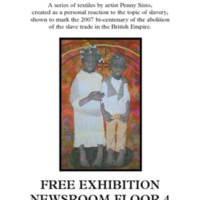
Threads of Strength and Fortitude
Threads of Strength and Fortitude was an exhibition of a series of textiles by artist Penny Sisto, created as a personal response to the bicentenary. The quilts were shipped over from New Albany, Indiana, and exhibited at the Royal Armouries in Leeds. Eight quilts explored the theme of slavery through depictions of servitude, emancipation and the flight to freedom. Pieces on show include 'Slave Ship 1,' which depicts eight enslaved Africans chained by their necks on a slave ship. Another quilt, 'Ran Away', showed a farmer leading Underground Railroad travellers by lantern light. The exhibition was accompanied by an interactive DVD, 'Ordinary People, Extraordinary Courage: Men and Women of the Underground Railroad in the Indiana and Kentucky Borderland'. There was also a series of events, including guest lectures and workshops on the subject of the abolition of slavery aimed at school and community groups. Art-based workshops explored the themes of peaceful resistance.
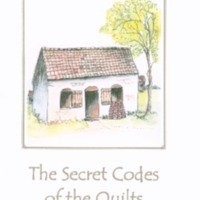
The Secret Codes of the Quilts
The Quaker Quilters of Norwich Quaker Meeting held the Slave Quilts Exhibition at the Friends Meeting House in Norwich in May 2007. By the 1860s in the United States there were organised flights to freedom for enslaved people from the southern plantations via the Underground Railroad – a network of paths leading to the North and Canada. The ‘safe houses’ where assistance was offered on the way were often the homes of Quakers. This exhibition looked to reproduce some of the secret codes said to be hidden within the symbols and patterns featured in quilts made by slaves, to pass on directions to those looking to escape.
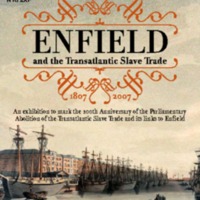
Enfield and the Transatlantic Slave Trade
An exhibition to mark the bicentenary was developed by Enfield Museum Service in partnership with the British Museum and Enfield Racial Equality Council. The exhibition looked at West African culture, the development of the local African community, the links between the transatlantic slave trade and Enfield, wealthy landowners and Quaker abolitionists who lived in the area. Free family days held during school vacations offered traditional Ghanaian story-telling, dancing and drumming, crafts and object handling. Living History Days gave visitors the opportunity to meet actors portraying William Wilberforce and Olaudah Equiano. School workshops included a drama session and performance about a runaway slave developed from material from Lambeth Archive. The museum service also produced a book, edited by Valerie Munday, which explored further the links between Enfield and the slave trade. The book was sent to all schools in the borough, and formed the basis of a teaching resource aimed at Key Stages 2 and 3. Loan boxes and handling collections provided by the museum service include Ghanaian artefacts and items relating to the slave trade. In 2011, Enfield Racial Equality Council unveiled a plaque to commemorate abolition at the Enfield Civic Centre.
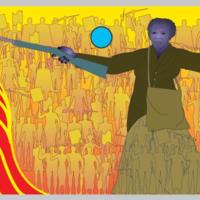
The Dreams of Harriet Tubman
In 2000, muralist Mike Alewitz planned on creating a series of murals about the heroes of the abolitionist movement, titled The Dreams of Harriet Tubman. Alewitz’s goal was to have the Dreams series as a necklace of murals across the state of Maryland with the flagship mural on a major wall in the city of Baltimore. This mural would depict Harriet Tubman, who was also known as Moses. In a pre-circulated plan on Black Radical Congress General News, Alewitz described how the flagship mural would have an army of freedom fighters (Martin Luther King Jr., Malcolm X, Mumia Abu Jamal, Sojourner Truth and Robert Gould) standing behind a musket-wielding Tubman. But the mural stirred up controversy when the group who had planned to display the mural, the Associated Black Charities Inc., decided the piece could be construed as racist and violent. Alewitz was asked to replace the musket but he refused: “I will not disarm Harriet Tubman. I won’t take [the musket] out of her hands.” The lack of a major wall was a setback for the Dreams series and another of the murals, on a wall in Hartford County, was defaced in the summer of 2000 by racist graffiti.